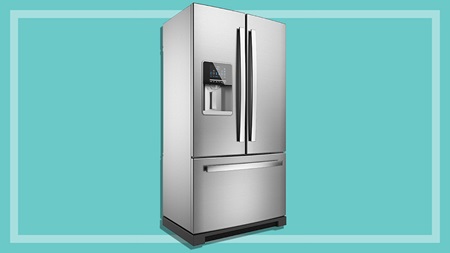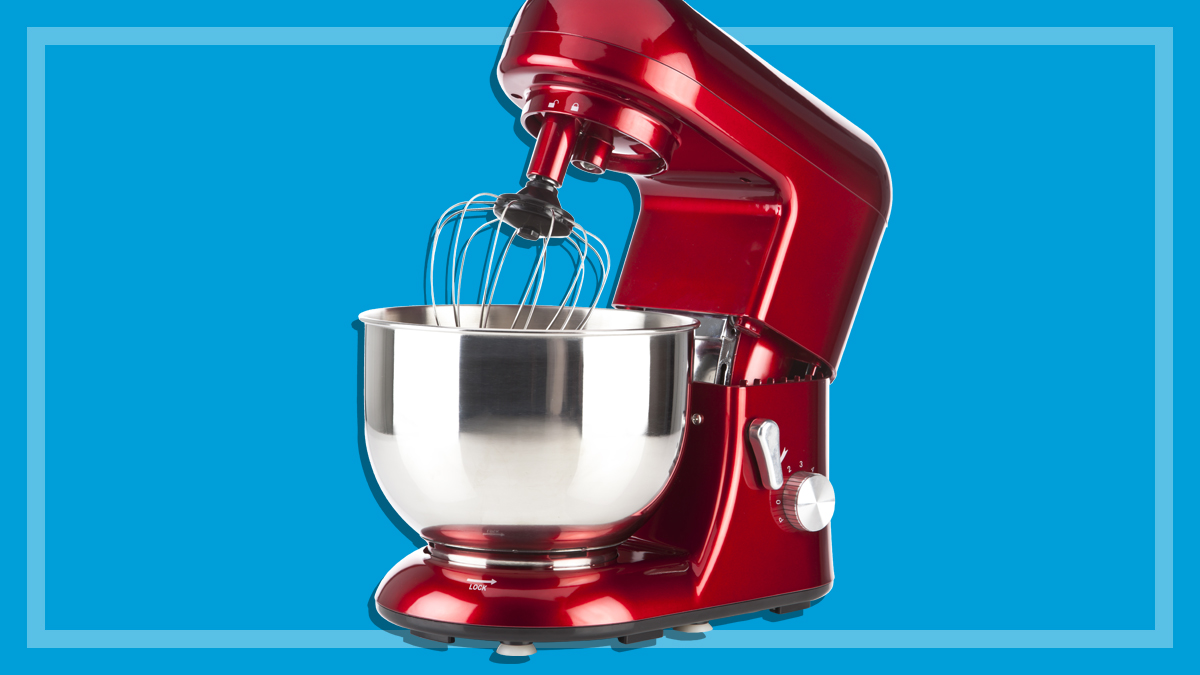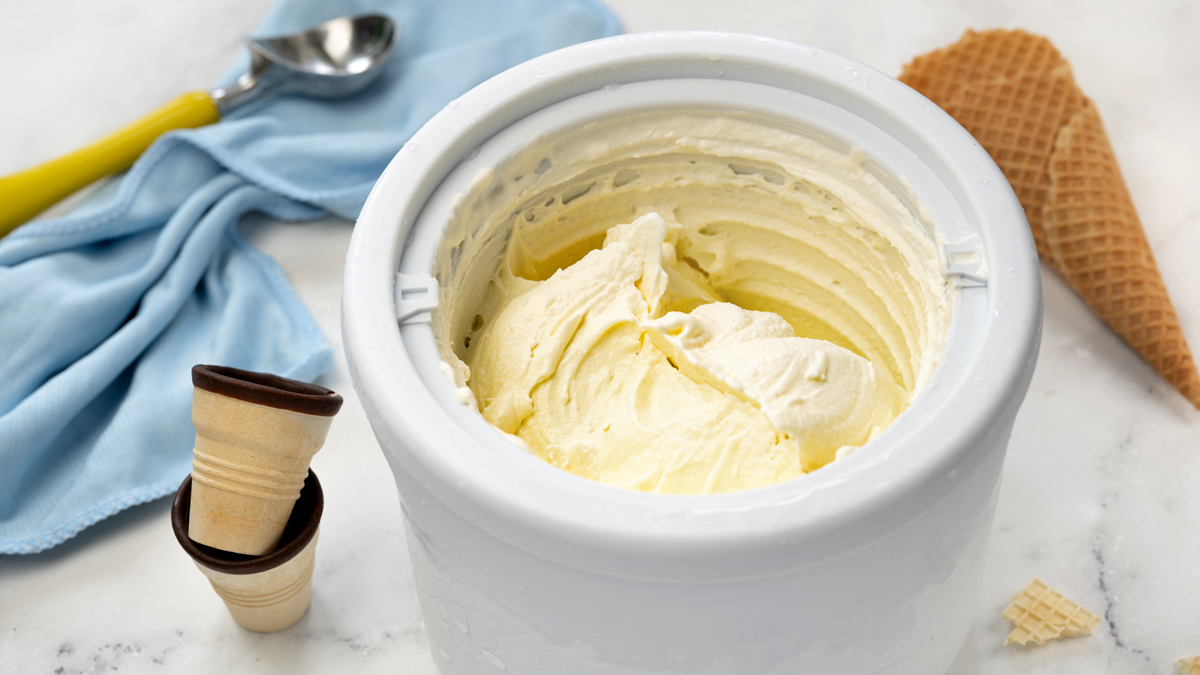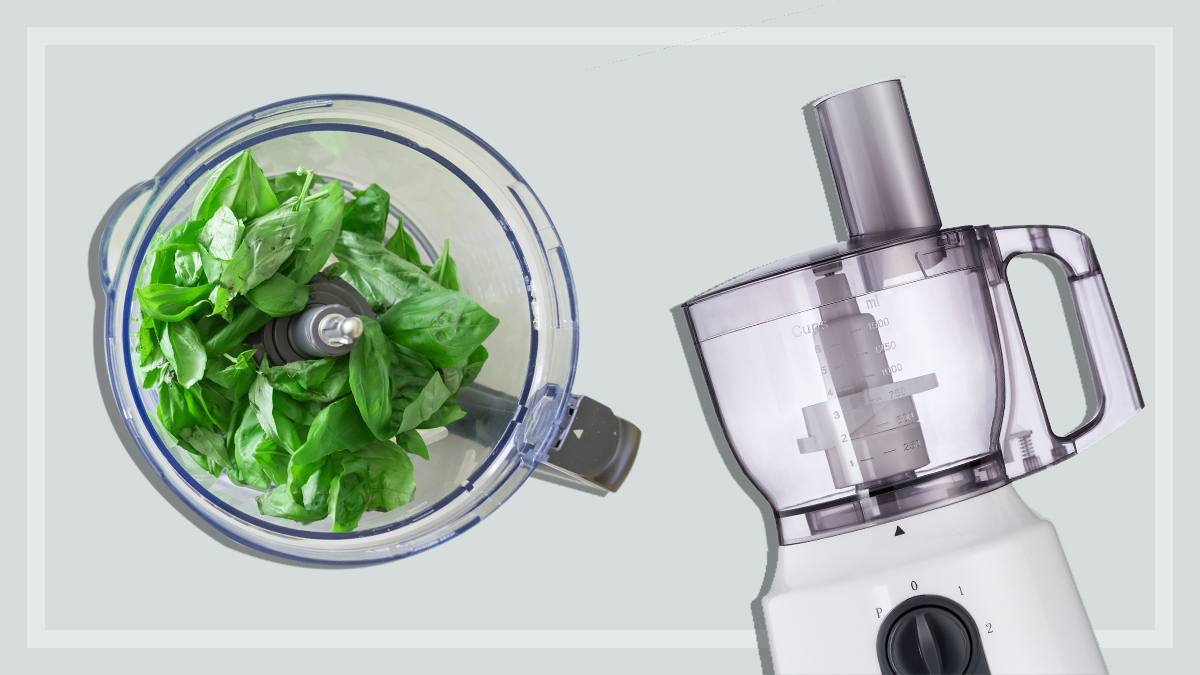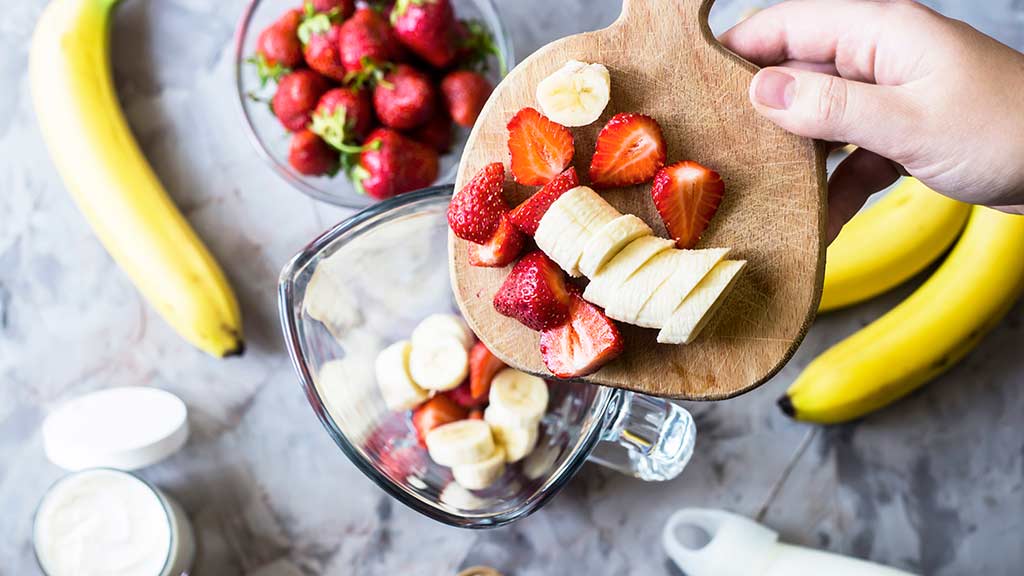Get our independent lab tests, expert reviews and honest advice.
How to reduce food waste with your kitchen appliances
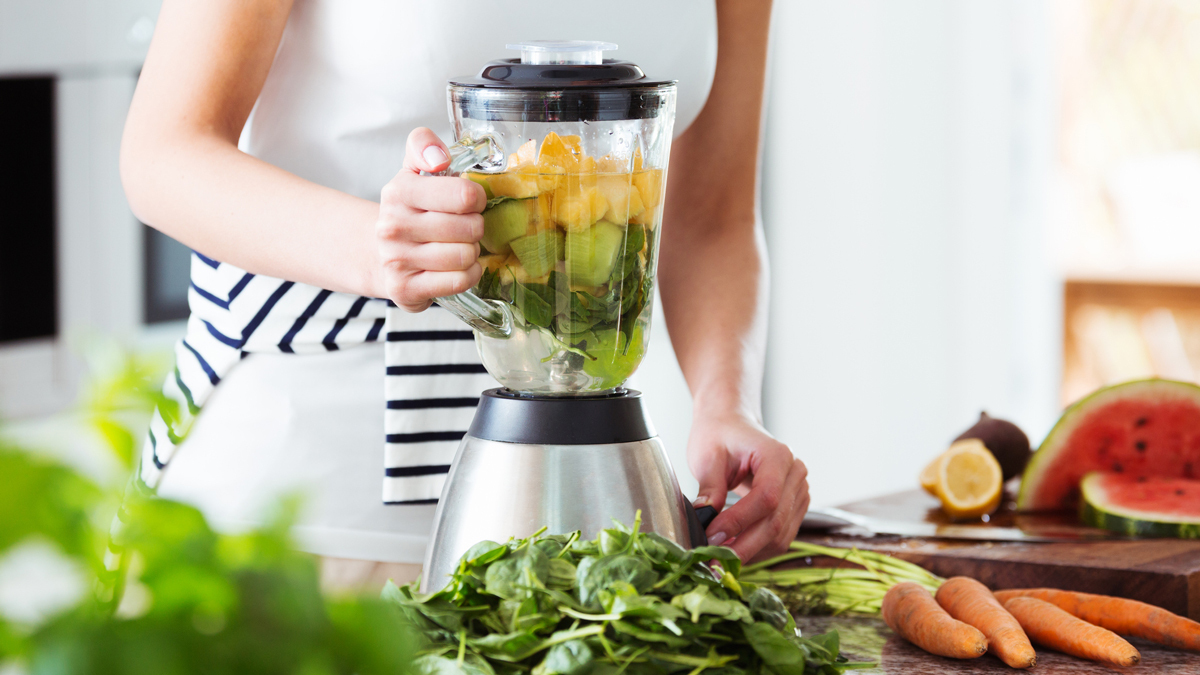
Need to know
- 7.6 million tonnes of food is wasted in Australia each year, and 70% of this is perfectly edible
- Food waste not only wastes money and resources, but takes a considerable toll on the environment, producing greenhouse gasses as it decomposes in landfill
- The kitchen appliances you choose can have a positive impact and help reduce food waste
On this page:
- Using your fridge to reduce food waste
- Using your freezer to reduce food waste
- Using your food processor to reduce food waste
- Using blenders and juicers to reduce food waste
- Using a food dehydrator or fan-forced oven to reduce food waste
- Using a slow cooker to reduce food waste
- How composting can help
Binning half a loaf of stale bread or a limp head of lettuce might not seem like a big deal, but it contributes to the 2.5 million tonnes of food waste that comes from Australian homes each year.
Food waste costs households around $2000–2500 per year, and that single head of lettuce is going to take 25 years to decompose in landfill.
Apart from wasting your money and precious resources (the land, water, animals and labour that go into producing the food you throw away), food waste also takes a considerable toll on the environment. As it decomposes in landfill, without proper oxygenation and enzymes, food releases methane – a greenhouse gas that’s a known contributor to global warming.
If food waste was a country, it would be the third biggest emitter of greenhouse gases after the US and China
OzHarvest reports that if food waste was a country, it would be the third biggest emitter of greenhouse gases after the US and China.
And according to OzHarvest, the top five most wasted foods in Australia are:
- vegetables
- bread
- fruit
- bagged salad
- leftovers.
We look at some tips and ideas to help you save these foodstuffs from the bin (and from landfill), and the kitchen appliances you can use to help reduce your food-waste footprint.
Using your fridge to reduce food waste
CHOICE whitegoods expert Ashley Iredale says you can use your fridge’s features to keep food fresher for longer.
“If your fridge has a chiller drawer, it’s the spot to store meat and fish, because it will keep the foods at -1°C which is the ideal storage temperature.”
Keeping meat and seafood in the chiller also means their smell will not be absorbed by other food in the fridge and any spills or leakages will be contained.
“A good size, or dual vegetable crisper is also important,” says Ashley. “This means you can have different humidity conditions for fruit and for vegetables, and keep ethylene producing foods, such as apples, bananas and avocados, separate from ethylene sensitive ones, such as carrots, green beans and cruciferous vegies – ethylene is a gas given off by certain foods which promotes ripening.”
When testing fridges at CHOICE, we give each model a score based on its ability to keep food fresh longer
Covered dairy compartments are good for preserving butter and cheese, says Ashley. “These help protect your dairy from absorbing bad smells from other parts of the fridge.”
They are a little warmer than the main part of your fridge, though, so you should opt for a colder part of the fridge for long term storage.
An inefficient fridge will have temperature instability or unevenness, which can lead to food spoiling quicker. Look for fridges with minimal temperature fluctuations and features such as humidity control on crispers to keep produce fresh.
Ashley recommends using a thermometer to make sure your fridge is operating at the optimum temperature -18°C in the freezer and 3°C in the fridge.
When testing fridges at CHOICE, we give each model a score based on its ability to keep food fresh longer. Ashley says this is the most important score to look at when considering a new fridge, so check our reviews before you buy.

Using your freezer to reduce food waste
Freezing food is one of the easiest and most effective ways to prolong shelf life. Opt for a fridge with a good-sized freezer, or look for a standalone chest or upright freezer.
“For most households, a combination fridge-freezer will be the sensible choice – the main advantages being space efficiency, convenience, and energy efficiency,” says Ashley.
“The disadvantage of a combination fridge-freezer is that you may be limited in capacity,” he says.
Standalone freezers are ideal for people who shop in bulk or cook a lot.
A third option is a hybrid of these two. Pigeon Pairs are a combination of upright single-door, matching fridges and freezers.
Tips for freezing food:
- Portion leftovers into containers and freeze for lunches and busy nights when you don’t have time to cook.
- Freeze sliced bread and defrost as you need to make toast.
- If you have overripe bananas, berries or fruits such as kiwi, mango, papaya and rockmelon, cut them up into small pieces and store in the freezer in plastic containers to use in smoothies.
- If you have vegetables such as beans, broccoli, carrots and corn in the fridge that you haven’t got around to eating, steam and refresh under cold water, then drain and freeze in zip-lock bags or plastic containers.
- You can freeze liquids such as stock, freshly squeezed citrus juice and coconut milk in ice cube trays so you have portions to use as you need.
- Keep chopped herbs along with kaffir lime leaves, lemongrass stalks and whole chillies in zip-lock bags in the freezer so you always have them on hand for soups, curries, stews and stir-fries.
Using your food processor to reduce food waste
“If you’re thinking about purchasing a food processor to reduce the amount of processed foods you buy, or you want to start making food from scratch and reducing food waste, then you would want a food processor that includes attachments,” says CHOICE home economist Fiona Mair.
“There are food processors that include blenders, citrus juicers and mill attachments making them the ultimate kitchen accessory,” says Fiona.
But, warns Fiona, if you plan to use all these attachments, they can be a pain to store.
If you’re after a multi-purpose food processor, here are some models you may like to consider (CHOICE members can access our full reviews for each appliance):
- Breville BFP680BAL The Kitchen Wizz 11 Plus includes a mini processor and blade storage
- Magimix CS 5200XL includes a mini processor, citrus juice attachment and blade storage
- Kenwood Multipro Excel FPM910 includes a mini processor, blender, blade storage, citrus juicer, beaters and mill.
Tips and ideas for processing different foods:
- Stale bread can be turned into breadcrumbs, then stored in the freezer.
- Herbs can be processed in a mini processor with a little oil and placed into small containers and frozen. You can make a pesto with any soft leaf herb – parsley is great with a bit of lemon, olive oil and garlic – add any type of nut to give it a creamy texture. Store in a jar in the fridge for up to a week and drizzle on roasted vegetables, fish, chicken and any meat, or use as a salad dressing.
- Vegetables such as carrots, potatoes, onions and celery can be sliced with the slicer attachment, then blanched and frozen.
- Sliced or shredded vegetables can also be made into pickles. This is a great way to preserve cabbage, carrots, cauliflower, eggplant, zucchini and cucumbers.
- Finely chop vegetable offcuts to make vegetable patties or to add to the kids bolognese – they won’t know!
- Leftover cuts of cheeses and vegetables can be grated using the shredding attachment and shaped into vegetable fritters to pan-fry.
- Almost out-of-date sour cream, yoghurt, ricotta or cream can be added to cake and muffin batters.
Using blenders and juicers to reduce food waste
Whether you’re making a smoothie, juice, nut butter or puree, opt for a high-performance model that can easily blend frozen fruit or process raw vegetables, so you can turn fruit and veg past its best into fresh juices or smoothies.
If you’re in the market for a new blender, Fiona suggests considering a model such as the Breville The Froojie Juice Fountain, which comes with a smoothie attachment and the Breville 3X Bluicer Pro, which combines a juicer with a blender.
A high-performance blender can also be used to make nut butters and nut meals if you have an excess of nuts. “Grind nuts before they go rancid and place in a sealed storage container and freeze,” says Fiona. “This way you can add the ground nuts to smoothie bowls, cakes, biscuits, pastries and salads when you need.”
Using a food dehydrator or fan-forced oven to reduce food waste
If you have an abundance of fruits and vegetables that you’re not going to get around to cooking, try dehydrating them to transform into crispy snacks and garnishes with a concentrated flavour.
If you don’t have a dehydrator, you can use a fan-forced oven that can go as low as 50°C. Try dehydrating tomatoes, beetroots, kale, spinach, apples, berries and beef strips. The fruit and veg needs to be fresh and cut into small pieces before you dehydrate it.
Apple crisp recipe
Save excess apples from the bin by trying Fiona’s apple crisp recipe. You will need a food dehydrator or a fan-forced oven (use multiple shelves); and a mandolin or a food processor slice disc (will only slice half an apple depending on the chute size).
Ingredients
- 2 large Apples (Gala, Fuji, Pink Lady)
- 1 tbsp lemon juice
Method
- Preheat the oven to 90°C fan forced.
- Wash and dry apples well. Remove the core.
- Use a very sharp knife or a mandolin, leave the apples whole and slice thinly (2mm thick). Or if using a food processor, cut the apple to fit the chute and slice using the finest slicing disc.
- Place the slices on a baking tray lined with baking paper.
- Brush each slice with lemon juice, to prevent the apple from browning.
- Bake for 3 hours for crisp apples (the thicker the apple the longer the cooking time). Remove the tray from the oven and cool on a rack (they will come out a little soft but on cooling will become crisp).
Note: double the quantity and make a large batch using all shelf positions, store in an airtight container.
Leftover flatbread or tortillas?
Use leftover flatbread or tortillas to make your own crackers (not only does this reduce food waste but the crackers will be free from extra additives and preservatives found in store-bought options).
Slice pitta, Lebanese flatbreads or tortillas into triangles, drizzle with olive oil and a little salt, and bake in a fan-forced oven at 180°C for 10–15 minutes or until golden and crispy.
You can also transform sliced bread that is past its best into crispy toasts to serve on a cheeseboard. Dehydrate at a low temperature in a fan-forced oven for 20 mins, or until crispy and dried.
Using a slow cooker to reduce food waste
Slow cookers are a good way to batch-cook defrosted meat, pulses and produce. You can also make stock from wilted veg and left-over roasted meats and bones, or use up milk nearing its use-by date in rice pudding and homemade yoghurt. If you are serious about slow cooking, advises Fiona, then look for a slow cooker that can sear in the unit and that has a timer. “This will give better control when cooking as it will automatically switch to a warm mode or turn off. Being able to sear and sauté directly in the unit saves on extra cleaning and transferring of food when searing,” she says. Some models that feature a sear setting and timer, as well as extra features such as steam and yoghurt settings, include the following (CHOICE members have access to full scores and reviews):
- Sunbeam Secretchef Electronic Sear and Slow Cooker $169
- Crock-Pot Sear & Slow One Pot Cooker $159
- Cuisinart 3 in 1 Multicooker $359
- Russell Hobbs Searing Slow Cooker $90
- Breville Searing Slow Cooker $219
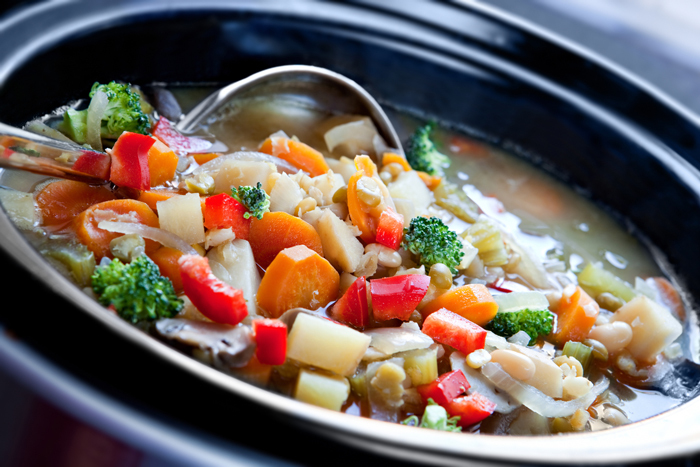
How composting can help
While a kitchen composting caddy or a home compost system won’t help reduce actual food waste, it can help reduce the amount going to landfill, and hence the amount of methane gas produced.
CHOICE kitchen expert, Martha Psiroukis, says there’s a huge range of composting products available, and the system or equipment that’s right for you depends on things such as how big your household is and how much you’re composting, and whether you have a garden compost or use a council-run compost system.
“Generally speaking, compost products range from compact indoor Bokashi bins that ferment your food waste (which you then bury or transfer to another compost system), to indoor kitchen food cyclers (such as the Breville Food Cycler), aboveground worm farms, compost tumblers and compost bins of any size, underground composters with worms, and outdoor solar food waste digesters.” (Note: our kitchen experts reviewed the Breville Food Cycler earlier this year and were not impressed).
There are options for every sized household, “from a small 20L Bokashi bin bucket up to a large outdoor compost tumbler or compost bin in excess of 400L capacity, costing anywhere from about $60 up to $800.”
Bokashi bins and food cyclers will have ongoing costs, such as Bokashi enzymes (approximately $12 every 2–3 months) or filters for the food cycler.
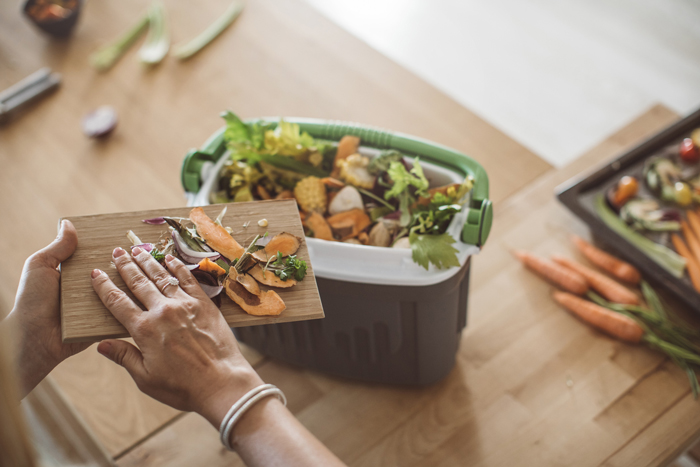
If you have an outdoor compost system, you’ll also want to select a caddy that will sit on your benchtop (so you can then transfer the waste to your compost system).
Tips for what to consider when selecting a kitchen compost caddy:
- Choose one that opens easily, and with one hand. This means you’re more likely to get that banana peel in the caddy rather than on it.
- Choose a size that matches your compost system’s requirements. For example, if your system says max 4L waste per week, choose a 2L caddy, and empty it twice a week (testing shows keeping it for a week leads to mouldy food waste that’s not good for your compost).
- An air vent helps keep the content from composting without oxygen (which produces methane gas and gets smelly), and prevents moisture building up.
- A smaller unit means you’re less likely to spill the content when transferring the waste. Keeping your compost exterior clean helps keeps pests away.
If you’re serious about stopping all of your food waste from going to landfill, it’s likely you’ll need more than one system.
“I have a family of five and we predominantly eat fresh fruit and vegies, we cook from scratch, and have almost no actual food wastage – just scraps,” says Martha.
Our general rubbish bin has gone from overflowing every week, to only being put out for collection every other week
CHOICE kitchen expert Martha Psiroukis
“We have no problem feeding a Bokashi bin, a large compost tumbler, a classic subpod, a small indoor worm farm, and a solar food waste digester with their recommended maximum capacity. Our general rubbish bin has gone from overflowing every week, to only being put out for collection every other week. We’re probably not the norm in terms of how much fresh produce we consume, and I think most households would be fine with one or two complementary systems, for example a twin Bokashi bin setup, and a compost tumbler or worm farm.”

